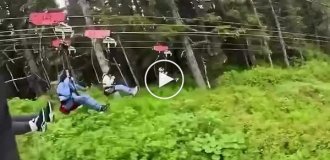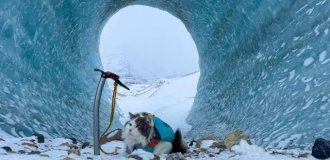
1. Initially, canned food “Sprats in Oil” was made from Baltic sprat (a subspecies of European sprat), then Caspian sprat, herring, herring fry and other small fish were also produced under this name. When cooking sprats, small fish are smoked without any pretreatment, after which they are preserved in oil.

2. In everyday life, the word "sprats" usually means any smoked canned fish from small fish in oil.

3. According to GOST, the composition of "Sprat in oil" is as follows: fish - sprat or herring, vegetable oil and salt. The amount of fish in the jar should be at least 75 percent of its volume, the rest is oil. The fish should be placed either with their bellies or their backs to the bottom or lid of the jar in parallel or criss-cross rows.

4. In the USSR, sprats were an indispensable attribute of the festive table. A can of sprats was not cheap - 1 ruble 80 kopecks. The hostesses always prepared various sandwiches with sprats for a large feast: with butter, mayonnaise or on lightly toasted bread.

5. When smoked, benzpyrene is formed - a carcinogen that accumulates in the human body and can cause the development of a number of mutations leading to the formation of malignant tumors.

6. Currently, in the Russian Federation, the permissible norms of benzapyrene (a substance produced during smoking) in such products have been reduced. Therefore, many manufacturers make "sprats" by simply preserving fish in oil with the addition of "liquid smoke".

7. High-quality sprats have a light golden hue (they are smoked on alder shavings). They must be whole in structure, with a smooth skin. Of course, the best sprats today are those that are in a glass or metal jar with a transparent lid. In this case, you can see for yourself the quality of the product.

8. In November 2006, Rospotrebnadzor stopped the circulation of sprats produced in Latvia. The fact of storage and sale of products with a high content of benzopyrene was revealed. The fact is that according to EU standards, sprats are allowed to contain 5 micrograms of benzopyrene per kilogram of products, and in Russia - only 1 microgram. Accordingly, canned food from Latvia did not fall under the Russian standard. However, in the summer of 2008 the ban on the import of Latvian sprats was lifted completely, as Russia increased the allowable concentration of benzopyrene in canned fish to the EU standard of 5 micrograms.
In early 2013, Rosselkhoznadzor found an increased level of benzapyrene in Latvian sprats produced by SIA Randa. Oskars Grosmanis, co-owner of the company, according to a quote from the Latvian portal Delphi, said: “We are completely at a loss. We have not received any official information. Judging by the data from the Internet site, the norm is exceeded by 35 times, but this is complete absurdity. In tin cans then there should be coal. According to him, the company manufactures products that meet all standards and requirements, and now the company is waiting for information from Russian departments on the further development of the situation.

9. Sprats (canned food) have winter and summer styling. In the summer, when the fish lives in warm water, it moves less and accumulates fat, so its back cracks and it is laid with its tummy up. So it lies, for example, in advertising photographs. In winter, the fish are laid with their backs up.

10. By the way, those who like sprats with caviar and fatter should pay attention to the date of manufacture of canned food: the fish caught in the fall is the fattest.

11. If sprats are partially boiled in a tin can and crumble when pierced on a fork, it means that the technological process was violated during their manufacture.

12. The shelf life of sprats is 24 months from the date of manufacture. An open jar of sprats can be stored in the refrigerator for no more than three days.

13. In the summer of 2008, in the border town of Mamonovo (Kaliningrad region), where a large fish cannery is located (1949), a monument to sprats was opened.

14. Recently, in addition to the classic sprats in oil, a lot of innovations have appeared on the shelves: sprats in tomato, sprats with lemon, etc. When choosing sprats, you need to pay attention to the container. The outer surface of the tin should be smooth, without dents and swelling. If, when moisture gets on the paper label, the letters are blurred, then you have a fake.

15. Useful substances contained in sprats: vitamins E, A, B1, B2, polyunsaturated fats, proteins, phosphorus, calcium.





















